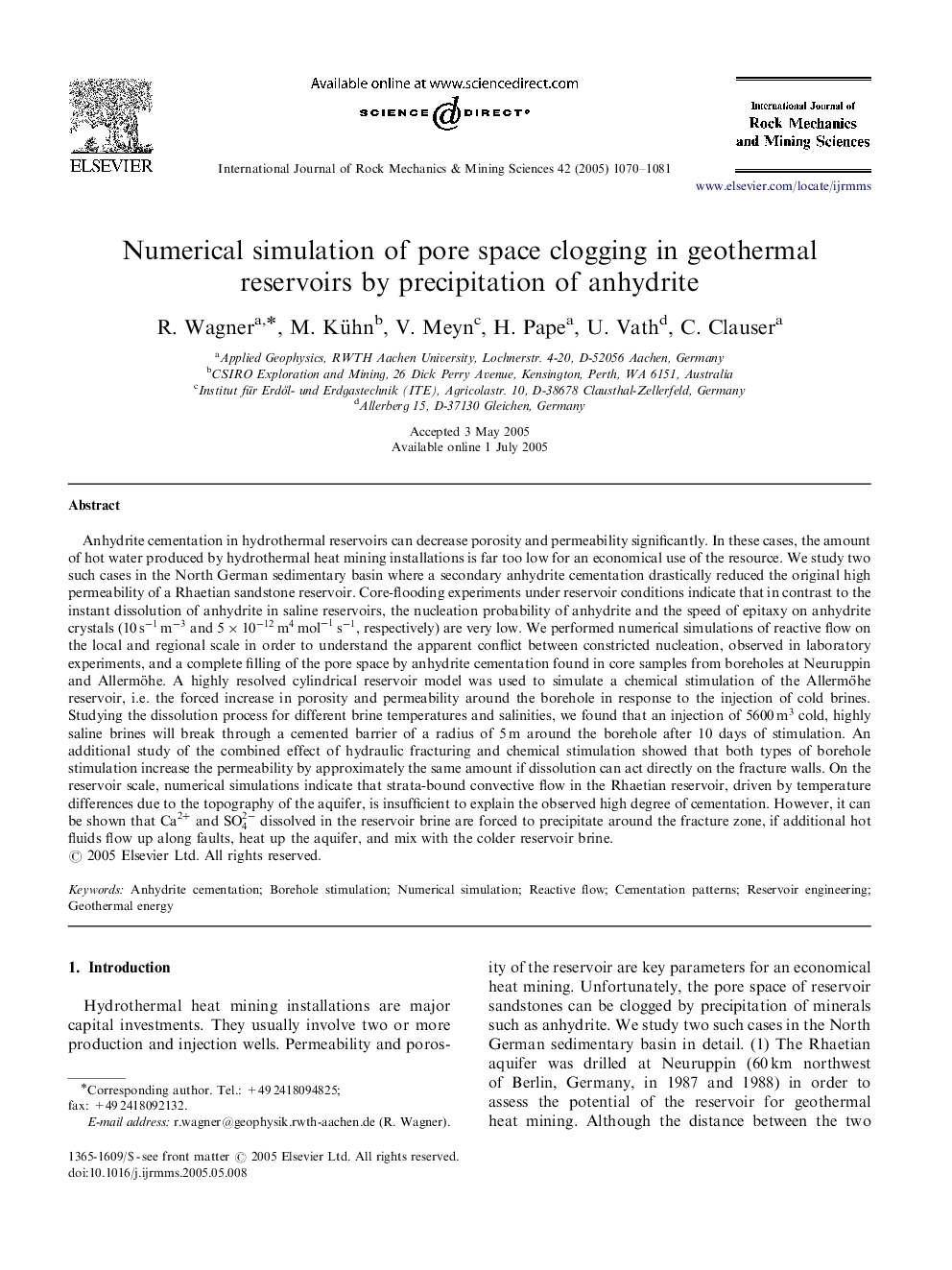| کد مقاله | کد نشریه | سال انتشار | مقاله انگلیسی | نسخه تمام متن |
|---|---|---|---|---|
| 9716448 | 1468769 | 2005 | 12 صفحه PDF | دانلود رایگان |
عنوان انگلیسی مقاله ISI
Numerical simulation of pore space clogging in geothermal reservoirs by precipitation of anhydrite
دانلود مقاله + سفارش ترجمه
دانلود مقاله ISI انگلیسی
رایگان برای ایرانیان
کلمات کلیدی
موضوعات مرتبط
مهندسی و علوم پایه
علوم زمین و سیارات
مهندسی ژئوتکنیک و زمین شناسی مهندسی
پیش نمایش صفحه اول مقاله

چکیده انگلیسی
Anhydrite cementation in hydrothermal reservoirs can decrease porosity and permeability significantly. In these cases, the amount of hot water produced by hydrothermal heat mining installations is far too low for an economical use of the resource. We study two such cases in the North German sedimentary basin where a secondary anhydrite cementation drastically reduced the original high permeability of a Rhaetian sandstone reservoir. Core-flooding experiments under reservoir conditions indicate that in contrast to the instant dissolution of anhydrite in saline reservoirs, the nucleation probability of anhydrite and the speed of epitaxy on anhydrite crystals (10s-1m-3 and 5Ã10-12m4mol-1s-1, respectively) are very low. We performed numerical simulations of reactive flow on the local and regional scale in order to understand the apparent conflict between constricted nucleation, observed in laboratory experiments, and a complete filling of the pore space by anhydrite cementation found in core samples from boreholes at Neuruppin and Allermöhe. A highly resolved cylindrical reservoir model was used to simulate a chemical stimulation of the Allermöhe reservoir, i.e. the forced increase in porosity and permeability around the borehole in response to the injection of cold brines. Studying the dissolution process for different brine temperatures and salinities, we found that an injection of 5600m3 cold, highly saline brines will break through a cemented barrier of a radius of 5Â m around the borehole after 10 days of stimulation. An additional study of the combined effect of hydraulic fracturing and chemical stimulation showed that both types of borehole stimulation increase the permeability by approximately the same amount if dissolution can act directly on the fracture walls. On the reservoir scale, numerical simulations indicate that strata-bound convective flow in the Rhaetian reservoir, driven by temperature differences due to the topography of the aquifer, is insufficient to explain the observed high degree of cementation. However, it can be shown that Ca2+ and SO42- dissolved in the reservoir brine are forced to precipitate around the fracture zone, if additional hot fluids flow up along faults, heat up the aquifer, and mix with the colder reservoir brine.
ناشر
Database: Elsevier - ScienceDirect (ساینس دایرکت)
Journal: International Journal of Rock Mechanics and Mining Sciences - Volume 42, Issues 7â8, OctoberâDecember 2005, Pages 1070-1081
Journal: International Journal of Rock Mechanics and Mining Sciences - Volume 42, Issues 7â8, OctoberâDecember 2005, Pages 1070-1081
نویسندگان
R. Wagner, M. Kühn, V. Meyn, H. Pape, U. Vath, C. Clauser,